Update: This post was written January 10, 2019.
Tick check! This frequent activity occurs every time I get back from the forests surrounding Smith Lake, a part of Myall Lakes National Park (~three hours north of Sydney). As I carefully sift through my clothes and inspect every inch of my body for signs of ticks, I reflect on the long weekend spent preparing for the field biology course taught at the University of New South Wales.
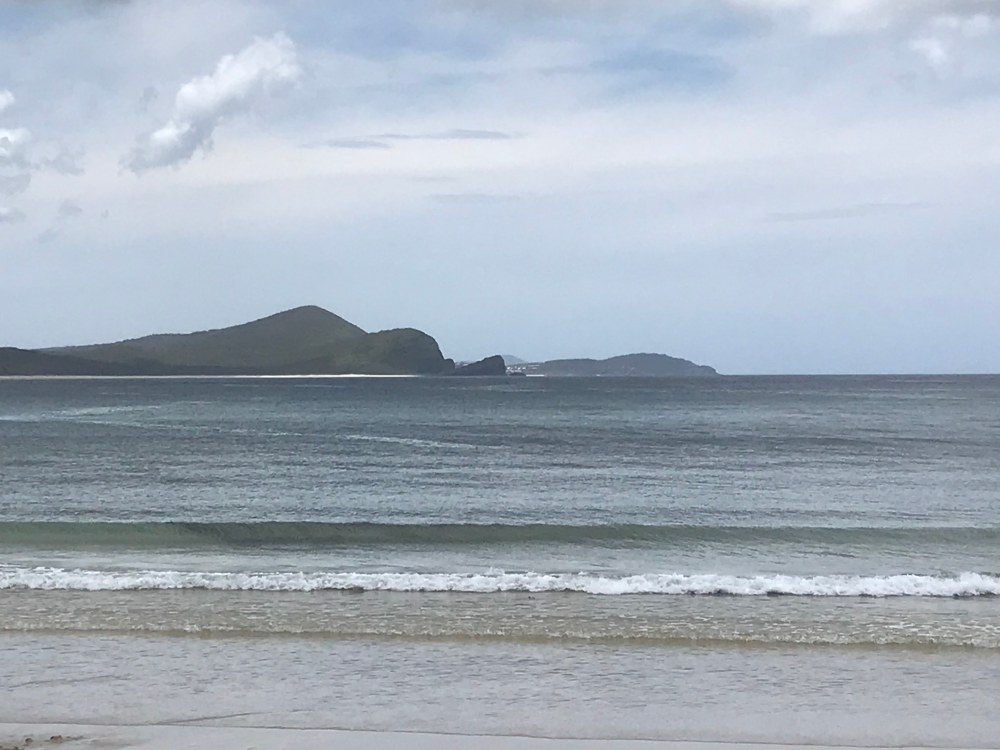
The ocean view, just outside Myall Lakes National Park, traditionally land occupied by the Worimi peoples.
The site is like a lakeside retreat, with a shimmering blue pool just beyond the simple cabins where my professor and I are staying. A butcher bird that knows no fear lands just a foot away from me on the balcony outside my cabin, chirping its robotic sounding call.

Despite the grim appearance, butcher birds actually have quite a melodic call
The goal is to set up cameras to take pictures of the native wildlife for the advanced field biology course introducing students to scientific techniques. The cameras are placed in three different habitat types, all with their own sets of challenges.
The first location is in the forest, where I was the only one to escape unscathed, while the rest of the team was stung and bitten by jumping ants. The beautiful eucalyptus forests provide shade from the hot sun, and besides the ants there are few other bugs. Next up is the abandoned farm habitat, where hiking through thick grass surely led to lots of tick bites. As I tripped over heaps of hidden stumps and branches, I stumbled out of the thicket onto the hilltop, complete with a beautiful view of the lakes! Hiking along the water sure makes for a great experience, and it almost makes up for the difficulty of the trek there.

Family recipe Latkes, fieldwork style!
After setting up cameras, we take a break for the day and end with a barbecue by the stream. I contributed fried potato pancakes, known as latkes, to celebrate the first night of Channukah, an eight-day holiday. A cheeky kookaburra came down and tried to steal one of the steaks from the grill, but other than that it was nice cooking outside.
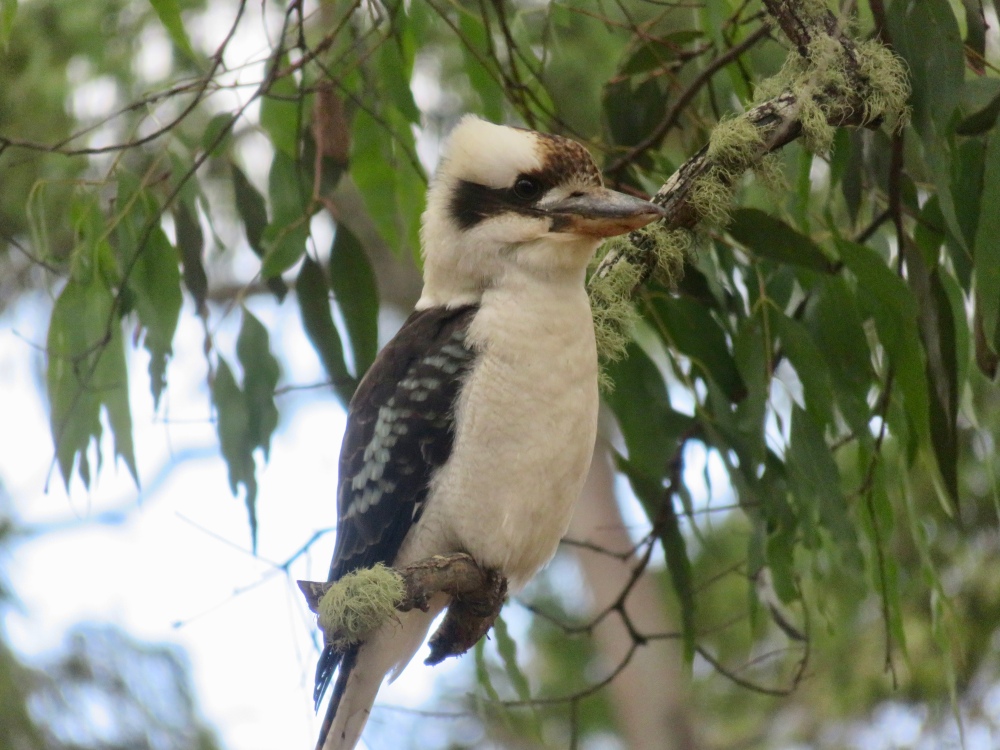
A kookabura, resting in an old gum (Eucaluptus) tree
The last location at the swamp proved to be the most challenging, yet one of the most beautiful. Fortunately, there were some tracks already carved through the thick marshy grasses of the swamp making it easier to follow. Much of the swamp grass provided ample foot cover above the murky waters, but there were many holes plunging down into the water that I accidentally stepped in. Though the muddy boots slowed me down, it helped me to appreciate the beautiful scene before me.
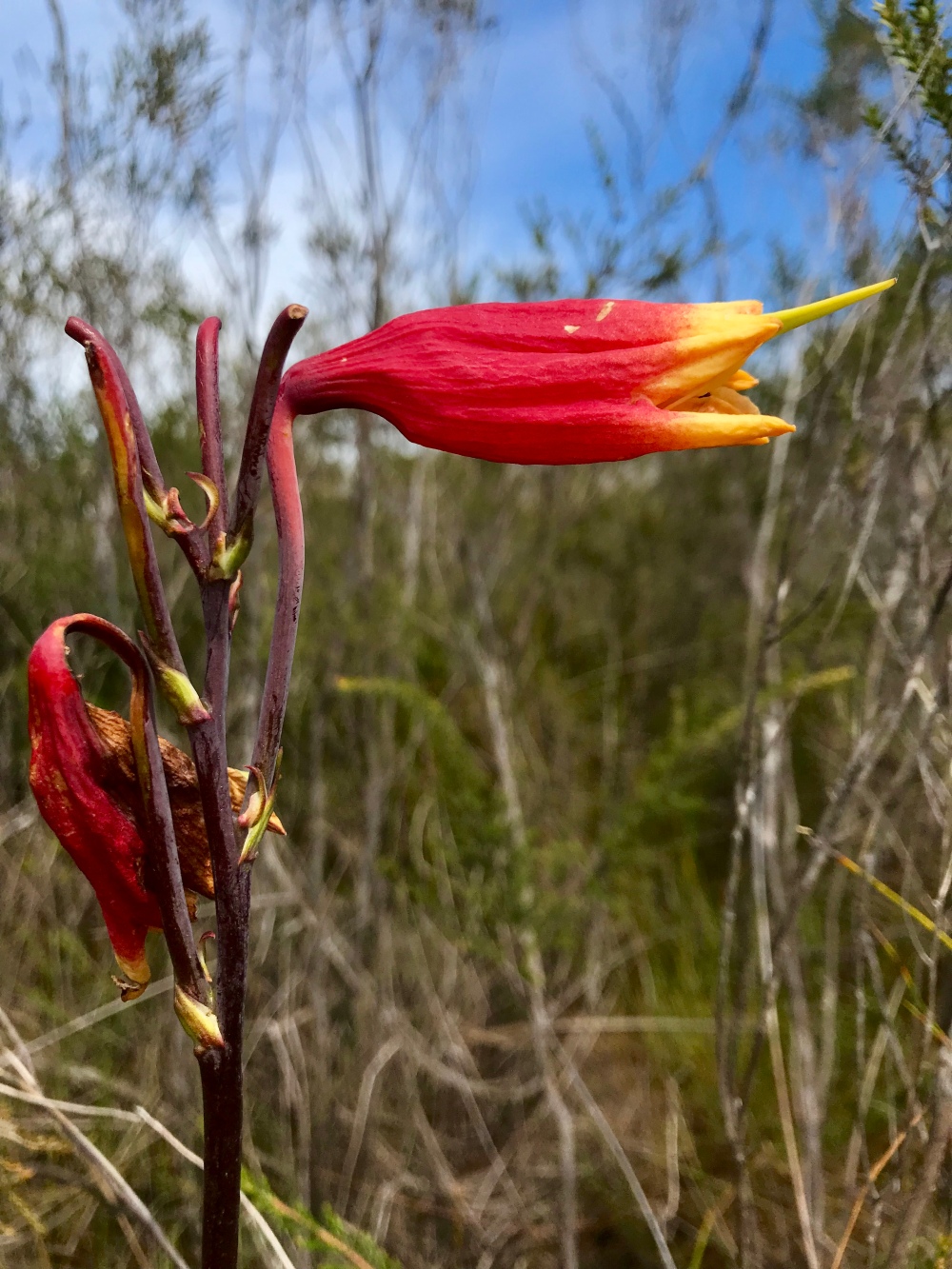
I felt as if this “Christmas Bell flower” (named for its annual peak bloom around the holiday season) was whispering to me “Go West.”
Many flowers were in bloom and we discovered some interesting insects around, including a praying mantis and some sparkly beetles. I even saw what appeared to be a familiar face, the monarch butterfly, which I found strange since I am used to seeing them in the Americas. White bellied sea eagles and kites flew amongst the marsh trees, and even though it was tricky setting up cameras here, it makes for a great field site!
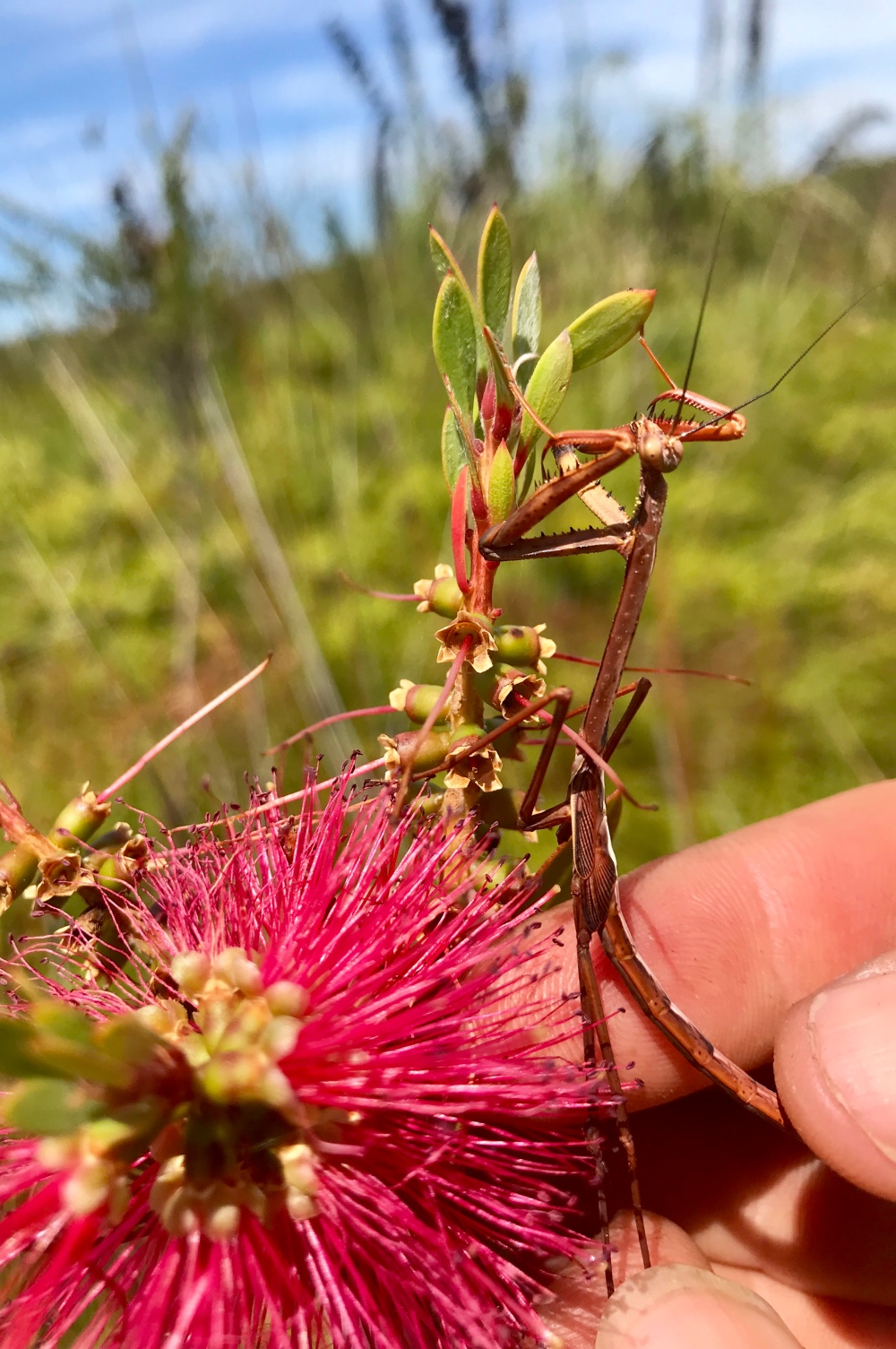
A praying mantis camouflaged to match the brown of the swamp.
After the work was done, we celebrated with a quick stop at the iconic Seal Rocks for a dip in the ocean and some pies for lunch. Though we didn’t see too many animals, hopefully the cameras I helped set up will capture some interesting photos for the students next year! (Update: The students saw a koala on one of the camera traps I set up! I’m jealous).
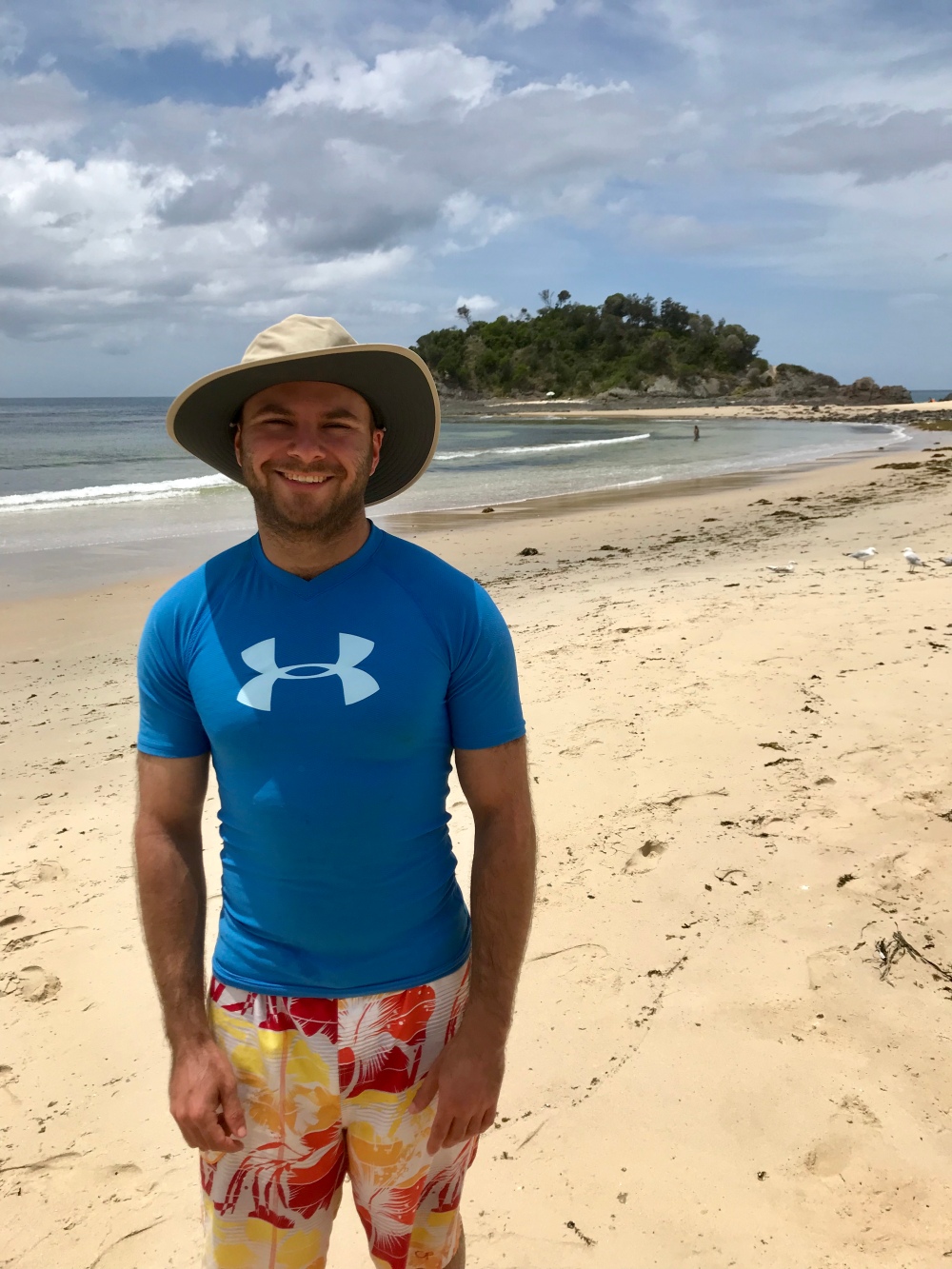
Probably my best field outfit yet. Yes, I walked into the pie shop and the grocery store dressed like this.